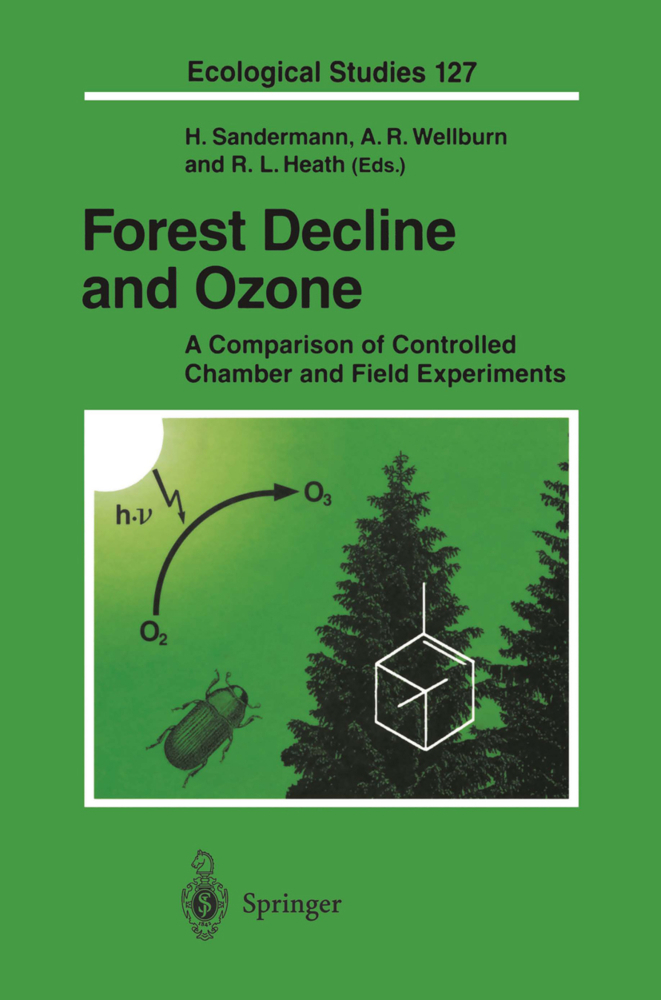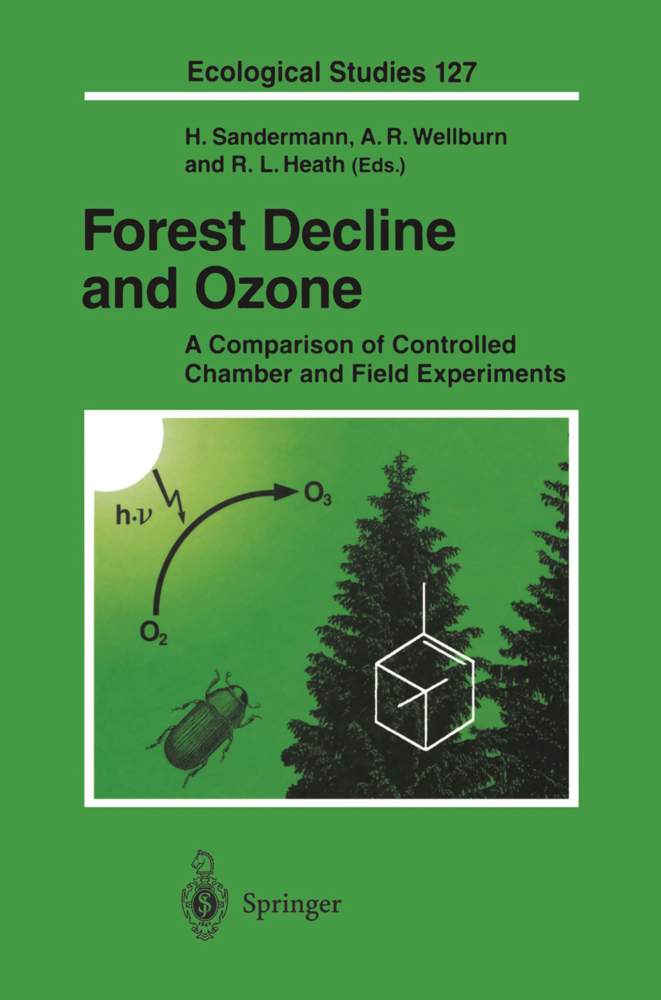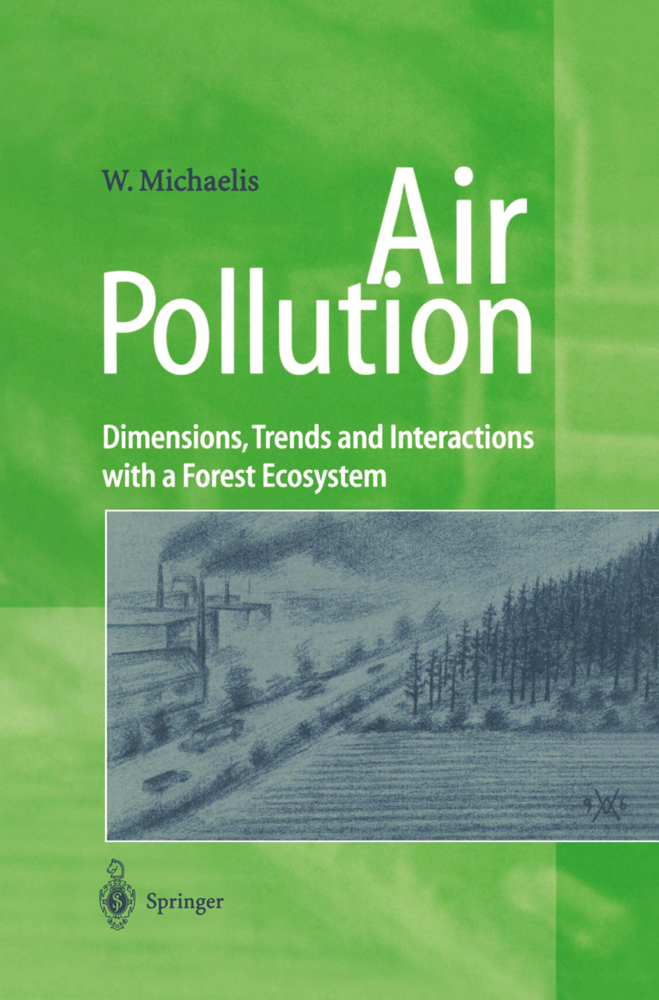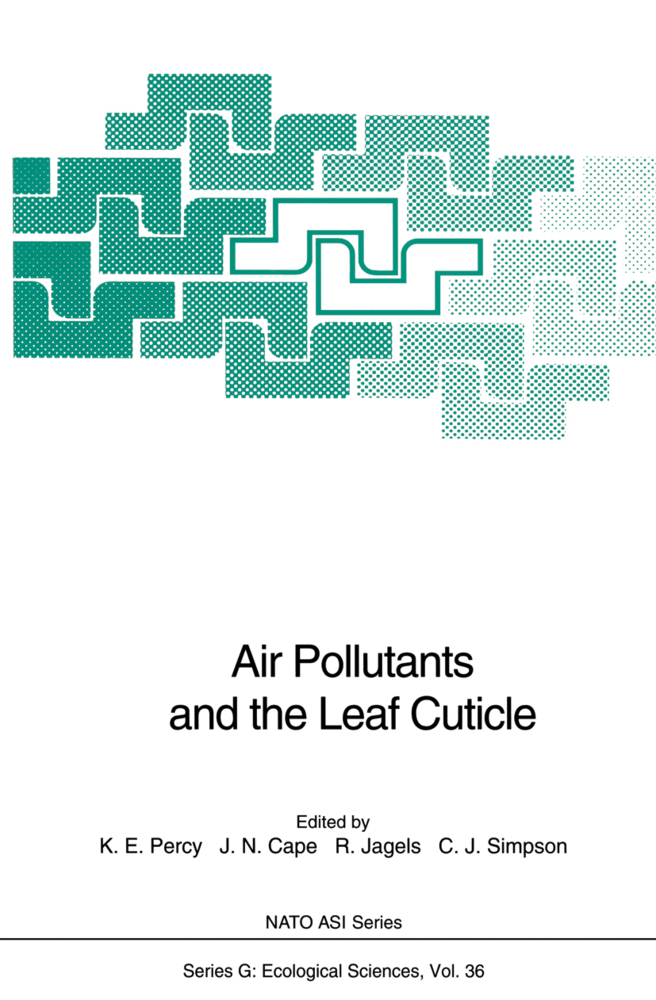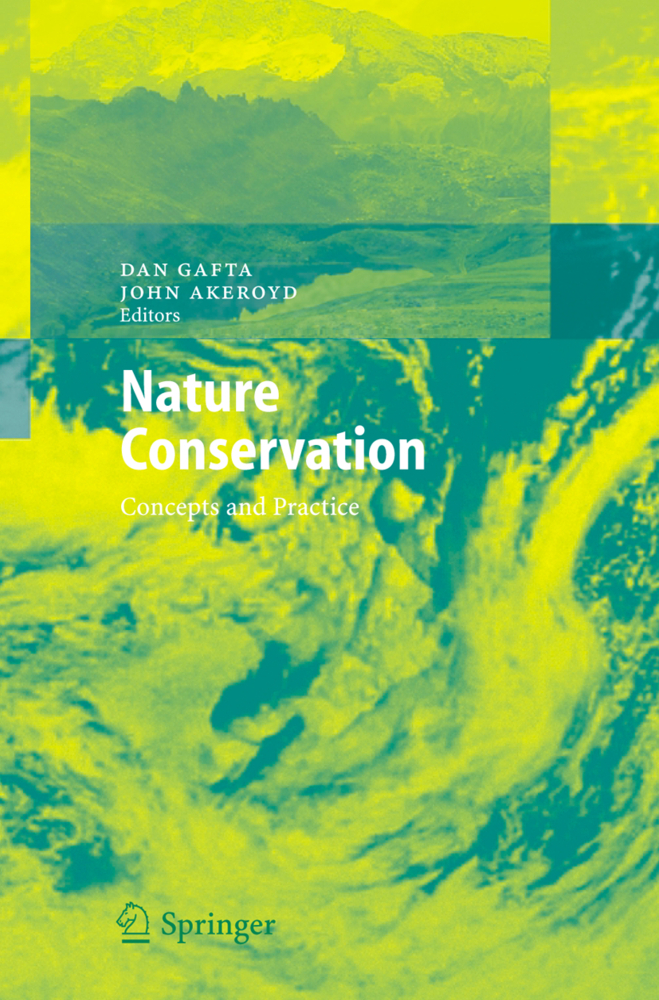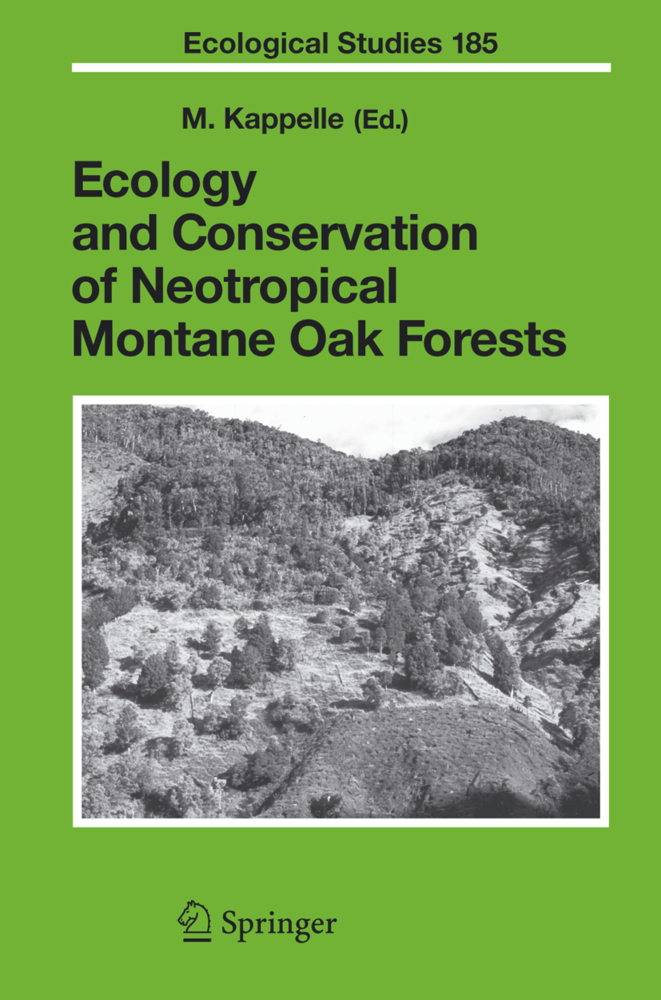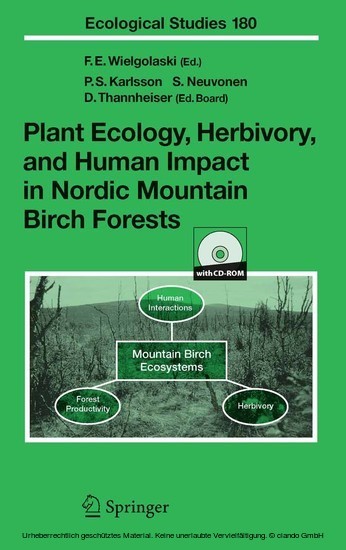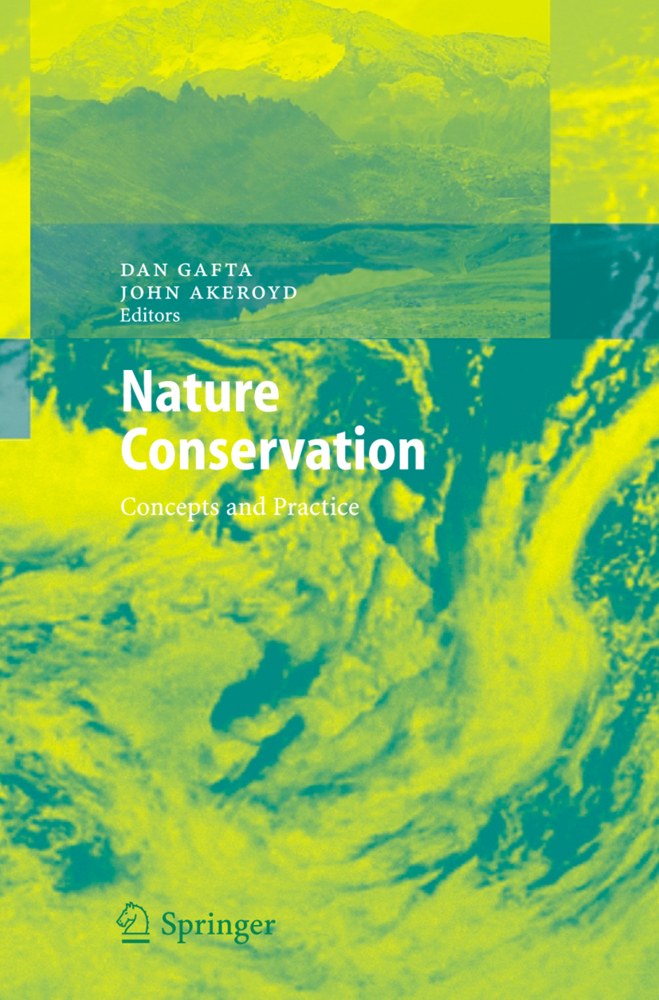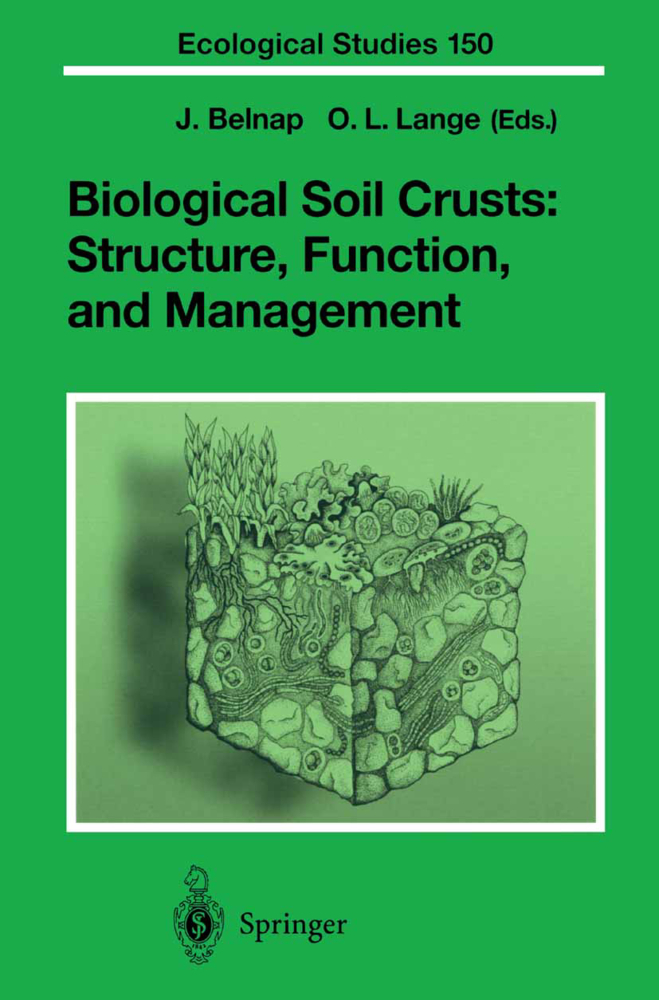Forest Decline and Ozone
A Comparison of Controlled Chamber and Field Experiments
Forest Decline and Ozone
A Comparison of Controlled Chamber and Field Experiments
The idea for this book arose in 1993, after the Free State of Bavaria through its Bayrisches Staatsministerium rur Landesentwicklung und Umweltfragen (Bavarian Ministry of Regional Development and the Environment) decided to discontinue both the Bavarian project management (PBWU) for forest decline research and the multidisciplinary field research on the Wank Mountain in the Alps near Garmisch. Forest decline through the action of ozone and other photooxidants was a main topic of the supported re search in the Alps and will be a topic of new investigations in the Bavarian Forest. Many interesting results were obtained, but the researchers involved have not had sufficient time to allow reliable conclusions to be drawn. It was therefore decided to ask inter national experts for contributions in order to summarize the best available evidence of a possible link between ozone and forest decline - a topic which has been studied in the USA since the late 1950s and in Europe since the early 1980s. The original idea of Waldsterben as an irreversible large-scale dieback of forests in Germany was soon recognized to be wrong (Forschungsbeirat 1989). However, the new criteria used for the official German and European damage inventories (loss or yel lowing of needles or leaves, tree morphology) indicate that per sistently high percentages of damaged spruce and pine remain, and there is an increasing percentage of damaged beech and oak, with a high proportion of biotic disease (Forschungsbeirat 1989; UN-ECE 1995).
1.2 The Chemistry of Tropospheric Ozone Formation
1.3 Urban Ozone Formation and Transport to Mountain Sites
1.4 Meteorological Effects on Tropospheric Ozone Concentrations
1.5 Ozone Networks and the Analysis of Measurements
1.6 The Global Distribution of Ozone Concentrations and the Seasonal Cycle
1.7 Long-Term Trends in Tropospheric Ozone Concentrations
1.8 Present Ozone Concentrations and Ozone Exposure over Europe and North America
1.9 Dry Deposition of Ozone
1.10 Conclusions
References
2 Ozone and Its Known and Potential Effects on Forests in Western United States
2.1 Introduction
2.2 Spatial Distribution and Temporal Trends of Ozone in Relation to Geographic Setting and Summer Climate
2.3 History of Ozone Damage to Californian Forests
2.4 Experimental Exposures of Western Conifers to Ozone
2.5 Effects of Chronic Ozone Exposure on Radial Growth in the Sierra Nevada and San Bernardino Mountains
2.6 Summary
References
3 Ozone and Its Known and Potential Effects on Forests in Eastern United States
3.1 Introduction
3.2 Recent Findings from Northeastern Forests
3.3 Recent Findings from Northcentral Pennsylvania.
3.4 Recent Findings from the Shenandoah National Park, Virginia
3.5 Recent Findings from Southern United States.
3.6 Recent Findings from Great Smoky Mountains National Park
3.7 General Conclusions
References
4 Ozone and the Forests in Austria and Switzerland
4.1 Introduction
4.2 O3 Levels and Areas at Risk in the Alps of Central Europe
4.3 Tree Responses to O3 Levels at Forest Sites
4.4 Mechanisms of O3 Impact on Trees Under Controlled Exposure Conditions
4.5 Evidence of O3 Injury on a Regional Scale?.-4.6 Conclusions
References
5 Role of Ozone in Forest Decline on Wank Mountain (Alps)
5.1 Introduction
5.2 Site Characteristics
5.3 Atmospheric Exposure
5.4 Soil Characteristics and Tree Nutrition
5.5 Physiological Observations
5.6 Conclusions
References
6 Ozone Responses of Trees: Results from Controlled Chamber Exposures at the GSF Phytotron
6.1 Introduction
6.2 Chamber Design and Performance
6.3 Selected Exposure Experiments
6.3.3 Effects of Mixtures of Air Pollutants
6.4 Biochemical Responses to Ozone
6.5 Premature Senescence in Beech
6.6 "Memory" Effects for Ozone in Conifers
6.7 Conclusions
References
7 Controlled O3 Exposures and Field Observations of 03 Effects in the UK
7.1 Introduction
7.2 The 03 Climate of the UK
7.3 Surveys of Tree Health
7.4 Long-Term Ozone Exposures
7.5 Ozone-Induced Changes in Epicuticular Waxes
7.6 Effects of O3 on Winter Hardiness and Frost Injury
7.7 Effects of Ozone on Nutrient Leaching
7.8 Effects of Ozone on Photosynthesis and Carbon Allocation
7.9 Interactive Effects of Ozone
7.10 Conclusions
References
8 Controlled Ozone Exposures and Field Observations in Fennoscandia
8.1 Land Use in Fennoscandia
8.2 Ozone Concentrations in Fennoscandia
8.3 Forest Health
8.4 Exposure Facilities - Open-Top Chambers and Open-Release Systems
8.5 Ozone-Induced Changes in Structure
8.6 Ozone-Induced Changes in Gas Exchange
8.7 Ozone-Induced Changes in Growth
8.8 Conclusions
References
9 Methods for Controlled and Field Ozone Exposures of Forest Tree Species in North America
9.1 The Forest and Ozone
9.2 Basis for Comparison of Field vs Chamber Research
9.3 Limitations to Comparisons
9.4 What Is Needed for Future Studies?
9.5 Summary and Conclusions.-References
10 Physiological Processes and Plant Responses to Ozone Exposure
10.1 Introduction
10.2 The Assault of Air Pollutants upon Plants
10.3 Summary of Physiological and Biochemical Events
10.4 Role of Models
10.5 Conclusion
References
11 Forest Decline and Ozone: Synopsis
11.1 Decline Definitions
11.2 Ozone History of the Series "Ecological Studies"
11.3 Decline Potential of Ozone
11.4 Ozone and Plant Homeostasis
11.5 Types of Injury and Improved Ozone Diagnostics
11.6 Population and Ecosystem Responses
References
Appendix: Color Illustrations.
1 Ozone Formation, Destruction and Exposure in Europe and the United States
1.1 Introduction1.2 The Chemistry of Tropospheric Ozone Formation
1.3 Urban Ozone Formation and Transport to Mountain Sites
1.4 Meteorological Effects on Tropospheric Ozone Concentrations
1.5 Ozone Networks and the Analysis of Measurements
1.6 The Global Distribution of Ozone Concentrations and the Seasonal Cycle
1.7 Long-Term Trends in Tropospheric Ozone Concentrations
1.8 Present Ozone Concentrations and Ozone Exposure over Europe and North America
1.9 Dry Deposition of Ozone
1.10 Conclusions
References
2 Ozone and Its Known and Potential Effects on Forests in Western United States
2.1 Introduction
2.2 Spatial Distribution and Temporal Trends of Ozone in Relation to Geographic Setting and Summer Climate
2.3 History of Ozone Damage to Californian Forests
2.4 Experimental Exposures of Western Conifers to Ozone
2.5 Effects of Chronic Ozone Exposure on Radial Growth in the Sierra Nevada and San Bernardino Mountains
2.6 Summary
References
3 Ozone and Its Known and Potential Effects on Forests in Eastern United States
3.1 Introduction
3.2 Recent Findings from Northeastern Forests
3.3 Recent Findings from Northcentral Pennsylvania.
3.4 Recent Findings from the Shenandoah National Park, Virginia
3.5 Recent Findings from Southern United States.
3.6 Recent Findings from Great Smoky Mountains National Park
3.7 General Conclusions
References
4 Ozone and the Forests in Austria and Switzerland
4.1 Introduction
4.2 O3 Levels and Areas at Risk in the Alps of Central Europe
4.3 Tree Responses to O3 Levels at Forest Sites
4.4 Mechanisms of O3 Impact on Trees Under Controlled Exposure Conditions
4.5 Evidence of O3 Injury on a Regional Scale?.-4.6 Conclusions
References
5 Role of Ozone in Forest Decline on Wank Mountain (Alps)
5.1 Introduction
5.2 Site Characteristics
5.3 Atmospheric Exposure
5.4 Soil Characteristics and Tree Nutrition
5.5 Physiological Observations
5.6 Conclusions
References
6 Ozone Responses of Trees: Results from Controlled Chamber Exposures at the GSF Phytotron
6.1 Introduction
6.2 Chamber Design and Performance
6.3 Selected Exposure Experiments
6.3.3 Effects of Mixtures of Air Pollutants
6.4 Biochemical Responses to Ozone
6.5 Premature Senescence in Beech
6.6 "Memory" Effects for Ozone in Conifers
6.7 Conclusions
References
7 Controlled O3 Exposures and Field Observations of 03 Effects in the UK
7.1 Introduction
7.2 The 03 Climate of the UK
7.3 Surveys of Tree Health
7.4 Long-Term Ozone Exposures
7.5 Ozone-Induced Changes in Epicuticular Waxes
7.6 Effects of O3 on Winter Hardiness and Frost Injury
7.7 Effects of Ozone on Nutrient Leaching
7.8 Effects of Ozone on Photosynthesis and Carbon Allocation
7.9 Interactive Effects of Ozone
7.10 Conclusions
References
8 Controlled Ozone Exposures and Field Observations in Fennoscandia
8.1 Land Use in Fennoscandia
8.2 Ozone Concentrations in Fennoscandia
8.3 Forest Health
8.4 Exposure Facilities - Open-Top Chambers and Open-Release Systems
8.5 Ozone-Induced Changes in Structure
8.6 Ozone-Induced Changes in Gas Exchange
8.7 Ozone-Induced Changes in Growth
8.8 Conclusions
References
9 Methods for Controlled and Field Ozone Exposures of Forest Tree Species in North America
9.1 The Forest and Ozone
9.2 Basis for Comparison of Field vs Chamber Research
9.3 Limitations to Comparisons
9.4 What Is Needed for Future Studies?
9.5 Summary and Conclusions.-References
10 Physiological Processes and Plant Responses to Ozone Exposure
10.1 Introduction
10.2 The Assault of Air Pollutants upon Plants
10.3 Summary of Physiological and Biochemical Events
10.4 Role of Models
10.5 Conclusion
References
11 Forest Decline and Ozone: Synopsis
11.1 Decline Definitions
11.2 Ozone History of the Series "Ecological Studies"
11.3 Decline Potential of Ozone
11.4 Ozone and Plant Homeostasis
11.5 Types of Injury and Improved Ozone Diagnostics
11.6 Population and Ecosystem Responses
References
Appendix: Color Illustrations.
Sandermann, Heinrich
Wellburn, Alan R.
Heath, Robert L.
| ISBN | 978-3-642-63912-8 |
|---|---|
| Artikelnummer | 9783642639128 |
| Medientyp | Buch |
| Auflage | Softcover reprint of the original 1st ed. 1997 |
| Copyrightjahr | 2012 |
| Verlag | Springer, Berlin |
| Umfang | XXI, 401 Seiten |
| Abbildungen | XXI, 401 p. 73 illus., 9 illus. in color. |
| Sprache | Englisch |

